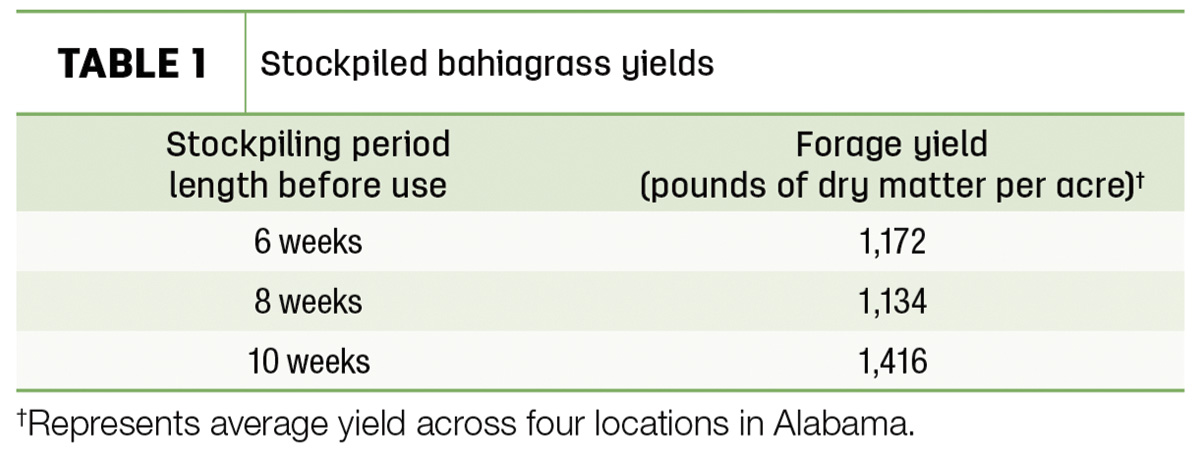First, the answer is “Yes!” – we can stockpile bahiagrass in the southeast U.S., but stockpiling requires strategic management (and a little timely rainfall) for success. Bahiagrass is a warm-season perennial grass with moderate forage nutritional value. Growth slows as day length decreases as we shift toward the fall months of the year. Stockpiling is the practice of allowing forage to accumulate in a pasture for grazing at a later time when growth is limited. Traditionally, most research has focused on stockpiling bermudagrass or tall fescue in the Southeast.
We recently revisited the idea of stockpiling bahiagrass. Bahiagrass is generally not as productive or high quality as well-managed bermudagrass; however, its strong persistence under grazing with relatively low fertilizer inputs, moderate quality and widespread use in the region make it a good candidate for stockpiling in beef cow-calf operations. Our study evaluated bahiagrass yield and quality under three different stockpiling strategies across four locations in Alabama (Clanton, Goodway, Troy, Headland counties). In early September 2021, bahiagrass stands were mowed or grazed closely (3 inches) to remove any thatch and fertilized with 60 pounds of nitrogen per acre (urea – 46-0-0). Bahiagrass was allowed to stockpile for a period of six weeks, eight weeks or 10 weeks, respectively, before use. Forage yield for bahiagrass stockpiled across these different time periods is presented in Table 1.

Average forage nutritional value of stockpiled bahiagrass ranged from 59% to 63% total digestible nutrients and 12% to 15% crude protein across stockpiling periods in this study. This is much greater quality than most bahiagrass hay produced in Alabama that is tested through the Auburn Soil, Forage and Water Testing Laboratory, and can meet the needs of a fall-calving cow herd with little supplementation.
Based on the yield estimates above, if pastures are managed under rotational or strip grazing, bahiagrass may provide 40 to 50 days of grazing from late October through early December. A second year of this study was conducted in 2022 with similar results. Timely initiation of stockpiling in September along with nitrogen fertilization are keys to support good late-season quality of forage and moderate yields for grazing.








